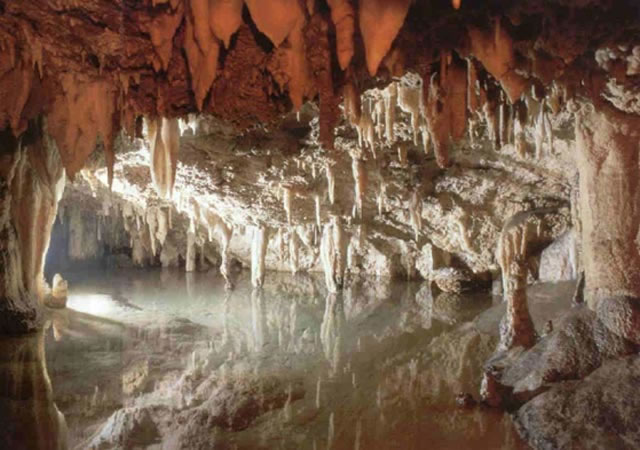Garfagnana, located between theApuan Alps the main part of the Apennines, is a rugged, mountainous area in the northwest corner of Tuscany north of Lucca. It is wilder and more isolated than the rolling hills and vineyards that make up the classic central Tuscan landscape, with winding mountain roads, gushing rivers and medieval towns perched on top of hills. Castelnuovo, the capital of the region, is situated at an altitude of 277 metres in the heart of the green Garfagnana area, a territory that constitutes the northern part of the valley of the Serchio River, which runs between the mountain walls of the Apuan Alps and the Appenines. Many ancient outlying villages are beautifully situated and accessible on country paths through “green woodland”. A walk to these villages allows visitors to be in contact with nature and at the same time to discover the traditional daily rhythms of an agricultural people and to admire their rural architecture.

Grotta del Vento is a spectacular and interesting karst phenomenon. Here the weather conditions have constantly dug, carved and modeled the limestone rock, creating impressive natural sculptures, such as the Panie Massif, the enormous arch of Monte Forato or the stone waterfalls and crevices of the Vetricia Plateau. Immersed in these awesome surroundings, the Grotta del Vento offers an exceptional variety of underground karst aspects ranging from living and shining stalactites and stalagmites, to little lakes, water courses, forms of erosion, mud formations and even perfectly-vertical shafts which can be visited with practical walkways.
Cave Tours
The touristic route is divided into 3 parts, with aspects completely different from one another.
On the first part, the flattest, a great amount of limestone formations such as stalactites and stalagmites can be seen and most of them are still growing.
On the second part a descent is made into an area of the cave that is still expanding, without limestone formations, but with forms of erosion on the walls, a little underground river on the bottom and some unusual mud formations in the tunnel taken on the way back.
On the third part a shaft is visited, a perfectly vertical 90-metre shaft, which is climbed from the bottom to reach a final chamber at the top, followed by a short underground canyon.
The tour of all 3 parts, the third itinerary, lasts about 3 hours, but it’s possible to visit only the first part with the first itineraru, about one hour, or the first 2 parts with the second itineray of about 2 hours.
